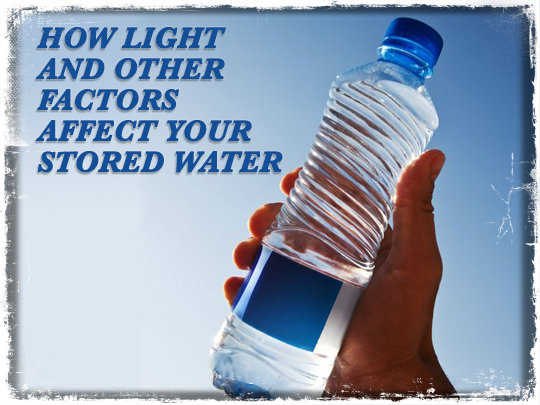
Bottled water and tap water if exposed to prolonged periods of direct sunlight and/or heat sources may develop algae, or mold (IBWA, 2015).
BPA and Sunlight/Heat
Bisphenol-A (BPA) is a chemical building block that is used primarily to make polycarbonate plastic and epoxy resins. Polycarbonate plastic has for 50 years been the choice for food and beverage product containers. It is lightweight, shatter-resistant, and transparent, making it ideal for food and beverage storage.
FDA’s current assessment is that BPA is safe at the very low levels that occur in some foods. Studies suggest however, that heat and light have an effect on how quickly and how much BPA will leach from the plastics in water bottles and other food packaging.
Cool and dark are the recommended environments for storing bottled water. While the FDA has stated that commercially bottled water has an indefinite shelf-life the packaging does not, and how your water is stored will have an effect on how long the packaging remains intact.
If you were to fill plastic water bottles that had been previously used, and you did not properly sanitize the container, and then you left the clear plastic bottles where direct or even indirect sunlight will reach them, you may very well see mold and algae developing inside the sealed containers.
Any water you draw from your tap should only be placed in approved water containers, (food grade containers), and only after proper cleaning of the containers. UV light will encourage algae growth so it is important that water be stored in the dark or stored in non-transparent containers.
Temperature swings will also have an impact. Bottled water stored in a hot car over the summer months will not last nearly as long as bottled water stored in a cool environment away from light and high heat and/or temperature swings.
Water stored for long periods will go stale, because of the lack of dissolved oxygen. Fish aquariums, for example, use bubble stones and other methods to aerate the water so there is always a certain level of dissolved oxygen in the water.
The bubbles created by the aeration rise to the top and collect dissolved oxygen from the air and then disperse it throughout the water. Obviously you cannot put aerators in your bottles and uncapping them to shake to create bubbles may cause some contaminates to enter the water.
Proper rotation is the key to fresh water. Water in and of itself has an indefinite shelf life, but how it is stored, what it is stored in, and where it is stored will have an effect.
Glass is an option, but it is transparent and it is heavy. It can be easily sterilized and the containers can be used repeatedly however, as long as the cap remains intact. Glass is hard to transport, because of the weight and the fact it has to be packed a certain way to prevent shattering.
Stainless Steel is an option as well, but again it is heavy, but it is not transparent so sunlight/artificial light has little effect, but water provided by a municipality would contain sodium hypochlorite (bleach), which will corrode stainless steel over time.
If you were to store water in Stainless Steel drums that were properly sterilized and the water was treated correctly you could safely store the water for years if sealed tightly. Once you open a container then you should use the entire contents.
Plastic has been for decades the choice for food storage because of the weight, durability, and ease of manufacturing. BPA is a concern, but as of now there is no medical evidence to show the amounts you be ingesting would have an effect on you. Of course it is a personal choice whether you use plastics that contain BPA, but if you do not choose plastic you will need reliable storage container options.
IBWA. (2015). Retrieved August 2015, from http://www.bottledwater.org/education/bottled-water-storage